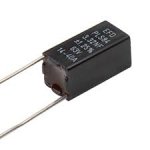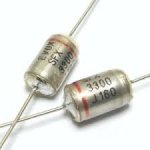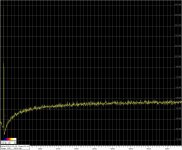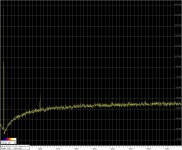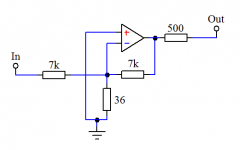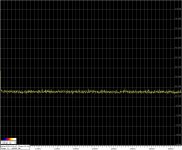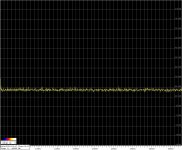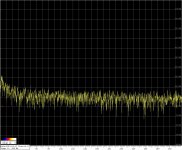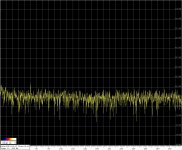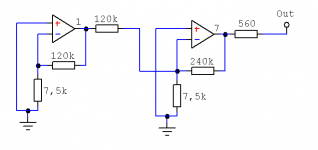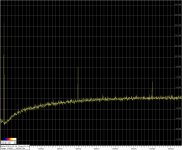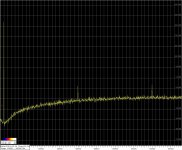Do you have experience with this type of paint?
Jan
That was what I thought. Mother Nature doesn't give anything for free, but she is willing to trade
A similar point is made in Samuel's paper.
Jan
Jan
Faster settling time usually means more distortion. This is because the agc control circuit is a high-order nonlinear feedback system. The filtering needed to suppress the agc level detect rectification ripple introduces poles and phase lag, leading to instability in the agc loop. Some HP oscillators used to have a switch on the back where you could choose lowest distortion or fastest settling time for low frequencies.
Cheers,
Bob
That was what I thought. Mother Nature doesn't give anything for free, but she is willing to trade
A similar point is made in Samuel's paper.
Jan
Attachments
No, it was just a handy link. Sorry for advertisement, it was not intentional. I was just surprised by the paint effectiveness in that rather sensitive soundcard.
A proper metal enclosure shields also magnetic field and is professional, but a plastic/3D printed enclosure with metalic paint or the poor-man's copper tape works too.
A proper metal enclosure shields also magnetic field and is professional, but a plastic/3D printed enclosure with metalic paint or the poor-man's copper tape works too.
<0.01% (<-80 dB) would have been decent in the 1980s. 2 ppm (0.0002%, -114 dB) is decent today, but not really low.
Victor's oscillator hits <-150dB. I have one of his oscillators in transit to me that's supposed to hit -155 dB (3rd harmonic), -160 dB (5th harmonic). -150 dB is 0.000003% or 30 ppb. That's low! State of the art in fact.
Tom
Home made PCB is ready for drilling ...
TL062 has lower noise. Maybe I will find an even better one. Polyprops are not good enough. I am using PS.
The TL062 was originally the low power version with higher noise. The '072 was the low noise version 30 years ago.
I'm not sure how the noise at that stage will propagate through to the output. You could check in the simulation but I suspect its quite low. DC stability may be more important there.
Not sure about this one either ?
It does show schematic in assy manual. Cost much more than Hk assy.
At $80 but if the Hk board does not work out may look at getting this one.
1 kHz Oscillator
its not so bad. The light bulb AGC can work quite well. Probably some optimization and opamp selection could get very good results. If the circuit is low impedance enough it won't be too sensitive to radiated noise sources and will have a lower internal noise. The output should be a much lower Z pot, no need for a dual I can see. Use an opamp with lots of drive for that node and optimize the output at around 1/2 of the available supply range to start with.
Home made PCB is ready for drilling ...
TL062 has lower noise. Maybe I will find an even better one. Polyprops are not good enough. I am using PS.
Hmm, yes in mind this ones. But which brand do you use? While exits axial and potted with may one wire turned.. see pictures while consider to update my Victor LDO.
OPA1656: Nice new toy. Will give it a try after my Mouser christmas pack has been arrived.
Important will be the shielding as Victor already does. And finally the over all shielding to get ride of the un-pleased HUM pickup.
Additional things, if I would made a new PCB:
. using single opamp's (or using only one of the two) to avoid opamp channel cross talk's while we deal in the -150 dB regions
. The single OPA1655 do not exists (yet)...
. Output buffer for balanced and/or none-balanced operation
Attachments
Balanced is more nosier than unbalanced. If the device is powered by battery, unbalanced is more advantageous as there can be no ground loop.
This is may your measurements! May show the detailed results.
Please also provide feedbacks about your agc mods, PS cap brand and resulting measurements
Hp
No, it was just a handy link. Sorry for advertisement, it was not intentional. I was just surprised by the paint effectiveness in that rather sensitive soundcard.
A proper metal enclosure shields also magnetic field and is professional, but a plastic/3D printed enclosure with metallic paint or the poor-man's copper tape works too.
Yes it would seem so. But from my CISPR results I'm convinced we either do not have a full picture of 'fields' , 'radiated' vs 'conducted' or there is an error in the skin equation.
There is also a biophysics component not fully understood.
Steel seems to provide a good shield but aluminum is questionable. Copper appears best but the thickness is a factor. Silver, not enough information.
ie high quality Faraday rooms cost more than a waterfront house in Longbeach.
Not to hijack, this is an interesting subject and probably needs its own zine.
Attachments
First tests of the OPA1656ID.
Received 3 examples. Very similar. No significant differences in noise and distortions tests. Tests was made in comparison with the LME49720.
Attached pictures:
1) Noise test schematic (as I am using for the LME49720 selecting).
2) LME49720 (selected example with low noise) spectrum in low frequency range.
3) OPA1656 in the same range.
4) LME49720 spectrum in wide frequency range.
5) OPA1656 in the same wide range.
6) Distortions test schematic. 1kHz 2,5V RMS at input/output. Measurements was done via the passive notch.
7) LME49720 spectrum.
8) OPA1656 spectrum.
Congratulations and thanks to Texas Instruments for the very good new opamp!
Received 3 examples. Very similar. No significant differences in noise and distortions tests. Tests was made in comparison with the LME49720.
Attached pictures:
1) Noise test schematic (as I am using for the LME49720 selecting).
2) LME49720 (selected example with low noise) spectrum in low frequency range.
3) OPA1656 in the same range.
4) LME49720 spectrum in wide frequency range.
5) OPA1656 in the same wide range.
6) Distortions test schematic. 1kHz 2,5V RMS at input/output. Measurements was done via the passive notch.
7) LME49720 spectrum.
8) OPA1656 spectrum.
Congratulations and thanks to Texas Instruments for the very good new opamp!
Attachments
I find it hilarious that they show in the typical applications, "Preamplifier Circuit for Vinyl Record Playback With Moving-Magnet Phono Cartridges", Baxandall tone control, guitar balanaced XLR for a brand new opamp.  = time warp, except for the soic-8
= time warp, except for the soic-8
Good price too, winner, move over 5534
Good price too, winner, move over 5534
First tests of the OPA1656ID.
Victor, thank you doing this nice measurements! What I see from you OPA1656 graphs:
3) as lower 50hz hum peaks
8) no 2. Harmonic's at all
The final question will rise how the OPA1656 will perform within the oscillator, while different & larger impedance's exists. May also replace the TL072 how this changes too
Hp
https://www.diyaudio.com/forums/vendor-s-bazaar/335416-opa1656-performance-cmos-audio-op-amp-8.html#post5903260
Read on the TI thread, opa1655 would be the Nr. but not seen on sky yet
While the cross talk or simple use ONE chips with single usage, may this is the TI marketing
or simple use ONE chips with single usage, may this is the TI marketing
Hp
Read on the TI thread, opa1655 would be the Nr. but not seen on sky yet
While the cross talk
Hp
Last edited:
OPA1656 is CMOS, so the 1/f noise is going to be higher. It is very impressive overall.The final question will rise how the OPA1656 will perform within the oscillator, while different & larger impedance's exists.
The 7K Ohms resistance will dominate the noise (10 nV/rtHz) so you won't see the internal noise contribution at 3-4 nV/rtHz.
What I would like to see is the input cap variation induced distortion- Use a higher series resistance to the input e.g. 10K and see how much the distortion increases. In every other respect its pretty exceptional as a general purpose opamp.
What I would like to see is the input cap variation induced distortion- Use a higher series resistance to the input e.g. 10K and see how much the distortion increases. In every other respect its pretty exceptional as a general purpose opamp.
Faster settling time usually means more distortion. This is because the agc control circuit is a high-order nonlinear feedback system.
This also applies to the simplest oscillators with no agc time constants. You can make a pretty good oscillator stabilized by non-linearity alone i.e. some very old one op-amp with R/C bridge and a couple of back to back diodes across one of the resistors to give a very slight gain compression. You can actually fiddle with the values to get the diodes to just conduct as little as possible and notice the closer you get to the critical point the longer it takes to settle. This was all covered by B. Oliver in an HP tech note.
The temperature stability is bad but the principle is valid.
Last edited:
- Home
- Design & Build
- Equipment & Tools
- Low-distortion Audio-range Oscillator
